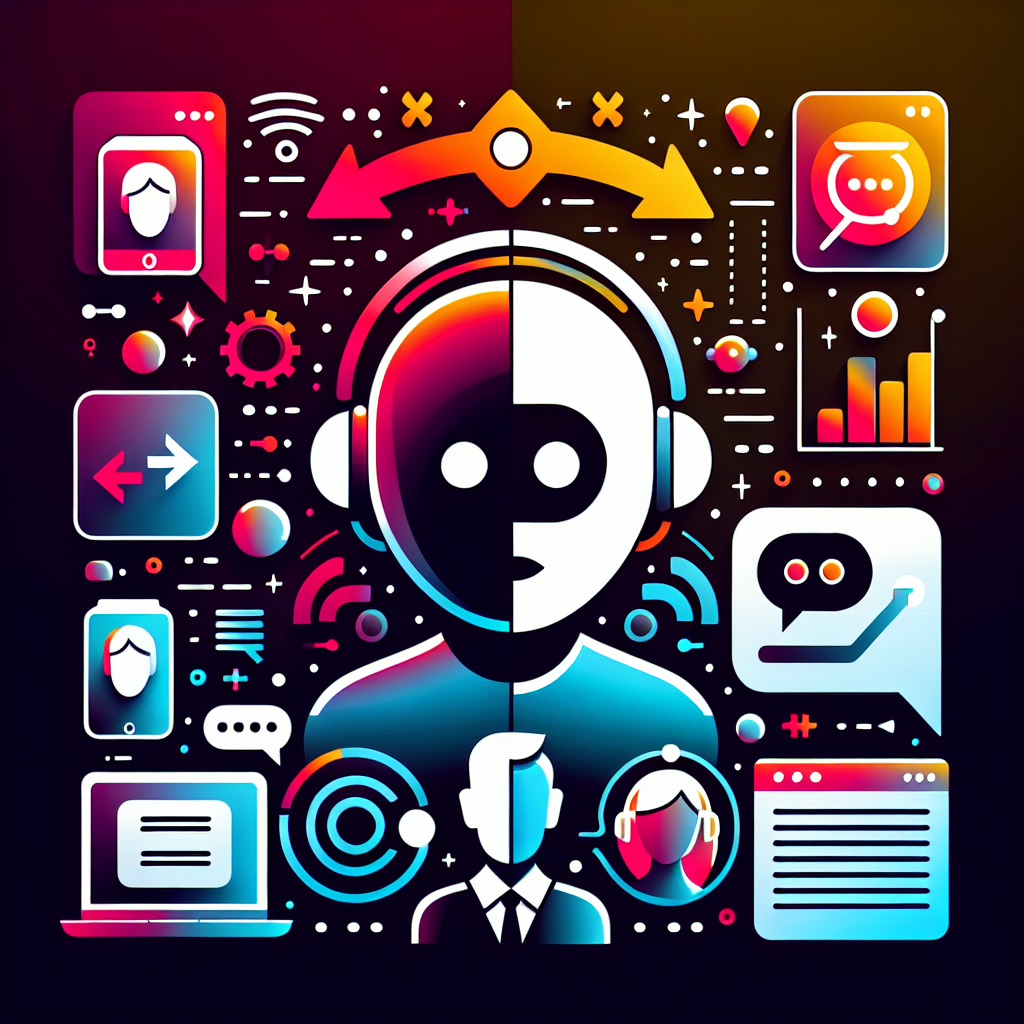In today’s digital age, customer service interactions are evolving rapidly with the help of artificial intelligence (AI). AI technologies such as chatbots, virtual assistants, and machine learning algorithms are revolutionizing the way businesses interact with their customers. These technologies are not only improving the efficiency of customer service processes but also enhancing the overall experience for customers.
Case Studies and Examples:
1. Chatbots: One of the most common applications of AI in customer service is the use of chatbots. Chatbots are virtual assistants that can interact with customers in real-time, answering their questions, providing information, and even assisting with transactions. For example, Bank of America utilizes a chatbot named Erica to help customers manage their finances. Erica can provide account information, schedule payments, and offer personalized financial advice. This has helped Bank of America improve customer satisfaction and reduce the workload on its human customer service agents.
2. Voice Assistants: Voice assistants such as Amazon’s Alexa and Apple’s Siri are also being used to enhance customer service interactions. For example, Domino’s Pizza has integrated its ordering system with voice assistants, allowing customers to place orders using only their voice. This has streamlined the ordering process and improved customer convenience. Additionally, voice assistants can provide personalized recommendations based on a customer’s previous orders and preferences.
3. Personalization: AI technologies are also being used to personalize customer service interactions. For example, Netflix uses machine learning algorithms to recommend movies and TV shows to its users based on their viewing history. This personalized approach has helped Netflix increase customer engagement and retention. Similarly, e-commerce companies like Amazon use AI to personalize product recommendations and promotions for each customer, leading to higher conversion rates and customer satisfaction.
4. Predictive Analytics: AI-powered predictive analytics are helping businesses anticipate customer needs and issues before they arise. For example, airlines use predictive analytics to forecast flight delays and proactively notify passengers, allowing them to make alternative travel arrangements. This has reduced the number of customer complaints and improved overall customer satisfaction. Similarly, insurance companies use predictive analytics to assess risk factors and offer personalized insurance plans to customers.
5. Sentiment Analysis: AI technologies can also analyze customer sentiment to gauge their satisfaction levels and identify potential issues. For example, social media platforms use sentiment analysis to track customer feedback and comments in real-time. This allows businesses to respond quickly to negative feedback and address customer concerns before they escalate. Sentiment analysis can also help businesses identify trends and patterns in customer feedback, enabling them to make data-driven decisions to improve their products and services.
FAQs:
Q: Will AI replace human customer service agents?
A: While AI technologies are transforming customer service interactions, they are not meant to replace human agents entirely. AI can handle routine inquiries and tasks, allowing human agents to focus on more complex issues that require empathy and critical thinking. Human agents are still essential for building relationships with customers and providing personalized assistance.
Q: Are AI-powered customer service interactions secure?
A: Yes, AI-powered customer service interactions are secure. Businesses use encryption and security protocols to protect customer data and ensure privacy. Additionally, AI technologies are constantly being updated and improved to prevent cybersecurity threats and unauthorized access.
Q: How can businesses implement AI in customer service interactions?
A: Businesses can implement AI in customer service interactions by partnering with AI technology providers, developing in-house AI solutions, or integrating AI capabilities into existing customer service platforms. It is important for businesses to train their employees on how to use AI technologies effectively and ensure that AI is aligned with their customer service goals and objectives.
In conclusion, AI is transforming customer service interactions by improving efficiency, personalization, and predictive capabilities. Businesses that embrace AI technologies are able to enhance the overall customer experience, increase customer satisfaction, and drive business growth. By leveraging AI-powered chatbots, voice assistants, personalization, predictive analytics, and sentiment analysis, businesses can stay ahead of the competition and meet the evolving needs of their customers in today’s digital world.

